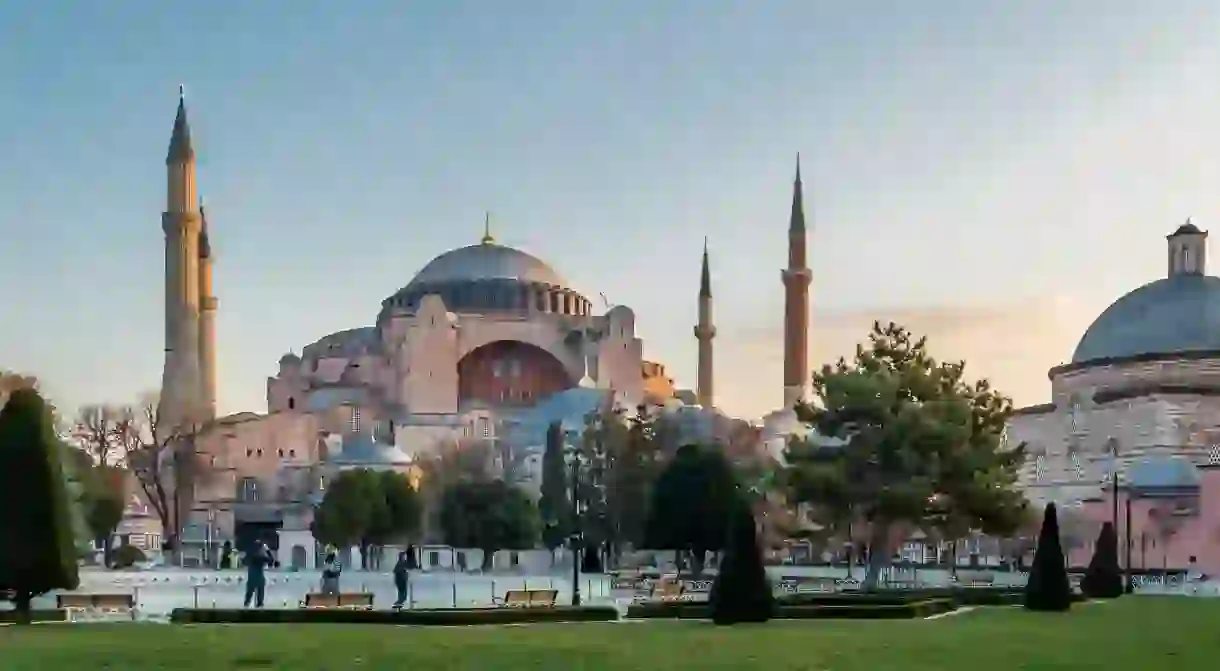The Complex History of Istanbul's Hagia Sophia

Ancient, beautiful, and huge — Istanbul is not a city you can come to grips with in a single day. But, with the help of travel specialist Şerif Yenen and his series of quick-guide videos, you can start unravelling the many different dimensions of the city. For this third instalment in his series, Yenen describes the transformation of the fascinating building that is the Hagia Sophia since it was first built in 360CE.
Want to explore Turkey’s vibrant bazaars and rocky valleys? Book Culture Trip’s 12-day group tour where you’ll stop at key historical sights and glide across the landscape in a hot-air balloon.
Introduction to the Hagia Sophia
While the Hagia Sophia is probably not the oldest intact building in the world – the Pantheon in Rome and the Basilica di Sant’Ambrogio in Milan were both built earlier – it certainly comes close. Today, the (current) Hagia Sophia is about 1,480 years old and has survived hundreds of earthquakes throughout history. The age, size, magnificence, architecture and mystical atmosphere make it truly a unique place.
The Hagia Sophia has always been regarded as a symbol of medieval Christian mysticism. Throughout Byzantine and Ottoman history, the building served as the Imperial Church or Mosque. Emperors were crowned here, victories celebrated and Ottoman Sultans said their prayers inside. For many centuries, the Hagia Sophia was the largest shrine in the world – a title it still holds today.
The church was named for Christ, rather than being dedicated to a saint. Translated to English, Hagia Sophia means Holy Wisdom.
Today’s Hagia Sophia is the third building to have been built on this site. The original building, constructed in 360 CE, was a basilica with a wooden roof. This original church, which also went by the name of Megale Ecclesia (Great Church), was burned down in a riot in 404. Theodosius II replaced it with a massive basilica in 415, which burned down during the Nika Revolt against Justinian in 532. 40 days after the revolt, Justinian began rebuilding the Hagia Sophia once again. He reopened it in 537, entering the building with the words, “Solomon, I have surpassed you!”, a reference to the fact that Solomon’s Great Temple in Jerusalem was the largest until the third Hagia Sophia.

Hagia Sophia becomes a mosque
After conquering Constantinople in 1453, Ottoman Sultan Mehmed II immediately went to the Hagia Sophia and ordered that it be converted into a mosque. It has remained a mosque ever since. In the following century, the architect Sinan was commissioned to make restorations and add Islamic elements to the building. Minarets, the mihrab and the minber, were added, and appropriately positioned to face toward Mecca, 10 degrees south of the main axis of the building.
Buttresses on the eastern side were added during the Ottoman period. In time, the Hagia Sophia became a complex consisting of tombs, a fountain, a library and more. When being used as a mosque, the mosaic panels remained, but the figures’ faces were covered. After the 18th century, the mosaic panels were covered completely.

Hagia Sophia Becomes a Museum…
The Hagia Sophia was used as a church for 916 years and as a mosque for 481. In 1934, by order of Mustafa Kemal Atatürk and the decision of the Council of Ministers, it was converted into a museum and, since then, has been open to visitors.
…and then Reverts to a Mosque
In 2020, it became a mosque once more. It is still open to visitors, including non-Muslims, but you must dress appropriately.














